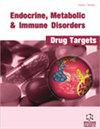细胞器靶向给药:关键挑战、最新进展和治疗意义
IF 2
4区 医学
Q3 ENDOCRINOLOGY & METABOLISM
Endocrine, metabolic & immune disorders drug targets
Pub Date : 2024-02-02
DOI:10.2174/0118715303282573240112104035
引用次数: 0
摘要
:细胞器特异性靶向给药已成为给药和治疗领域一种前景广阔的方法。这种创新策略是将治疗药物精确地输送到细胞内的特定细胞器,如细胞核、线粒体、内质网或溶酶体,目的是提高药物疗效,同时最大限度地减少脱靶效应。尽管细胞器特异性给药具有巨大潜力,但它也面临着一些关键挑战。其中一个主要挑战是开发能够准确驾驭复杂细胞内环境并将药物专门递送到所需细胞器的递送系统。要达到这种精确度,需要先进的纳米技术和生物材料工程。此外,确保这些给药系统的安全性和生物相容性也至关重要。这一领域的最新进展包括开发出纳米载体,如脂质体、纳米颗粒和树枝状分子,旨在通过配体受体相互作用或 pH 响应机制靶向特定细胞器。此外,分子生物学和基因工程的进步也使得设计基因编码的细胞器特异性给药系统成为可能。细胞器特异性给药具有广泛的治疗意义。这种方法有可能彻底改变神经退行性疾病、癌症和线粒体疾病等细胞器特异性疾病的治疗方法。通过精确靶向参与疾病进展的细胞器,可以显著提高疗效,同时最大限度地减少对健康组织的附带损害。本文章由计算机程序翻译,如有差异,请以英文原文为准。
Organelle Targeted Drug Delivery: Key Challenges, Recent Advancements and Therapeutic Implications
: Organelle-specific targeted drug delivery has emerged as a promising approach in the field of drug delivery and therapeutics. This innovative strategy involves the precise delivery of therapeutic agents to specific organelles within cells, such as the nucleus, mitochondria, endoplasmic reticulum, or lysosomes, with the aim of enhancing drug efficacy while minimizing offtarget effects. Despite its tremendous potential, organelle-specific drug delivery faces several key challenges. One major challenge is the development of delivery systems that can accurately navigate the complex intracellular environment and deliver drugs exclusively to the desired organelles. Achieving this level of precision demands advanced nanotechnology and biomaterials engineering. Furthermore, ensuring the safety and biocompatibility of these delivery systems is paramount. Recent advancements in this field include the development of nanocarriers, such as liposomes, nanoparticles, and dendrimers, designed to target specific organelles through ligandreceptor interactions or pH-responsive mechanisms. Additionally, advancements in molecular biology and genetic engineering have enabled the design of genetically encoded organellespecific drug delivery systems. The therapeutic implications of organelle-specific drug delivery are vast. This approach has the potential to revolutionize the treatment of diseases with organelle- specific pathologies, such as neurodegenerative disorders, cancer, and mitochondrial diseases. By precisely targeting the organelles involved in disease progression, the efficacy of therapies can be significantly improved while minimizing collateral damage to healthy tissues.
求助全文
通过发布文献求助,成功后即可免费获取论文全文。
去求助
来源期刊

Endocrine, metabolic & immune disorders drug targets
ENDOCRINOLOGY & METABOLISMIMMUNOLOGY-IMMUNOLOGY
CiteScore
4.60
自引率
5.30%
发文量
217
期刊介绍:
Aims & Scope
This journal is devoted to timely reviews and original articles of experimental and clinical studies in the field of endocrine, metabolic, and immune disorders. Specific emphasis is placed on humoral and cellular targets for natural, synthetic, and genetically engineered drugs that enhance or impair endocrine, metabolic, and immune parameters and functions. Moreover, the topics related to effects of food components and/or nutraceuticals on the endocrine-metabolic-immune axis and on microbioma composition are welcome.
 求助内容:
求助内容: 应助结果提醒方式:
应助结果提醒方式:


